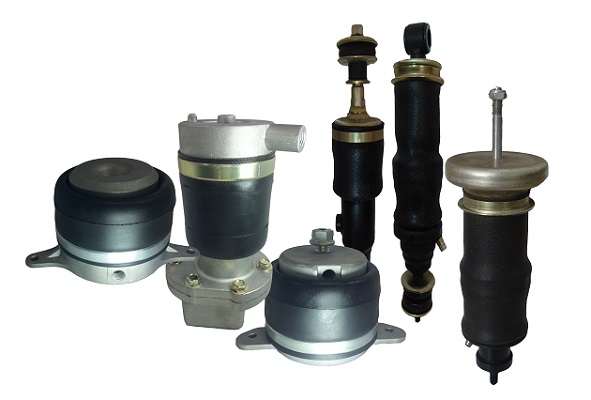Introduction to air spring
It is a precisely designed rubber fiber bellows, which does not provide force or support load, but fills it with compressed air through the air compressor to realize force transmission and elastic effect. According to the requirements for stroke, the air spring is generally designed as 1-3 curves, and can also be designed and manufactured as 4 or more than 5 curves when necessary. Under certain conditions, the two air springs can also be superimposed.

The air spring has nonlinear characteristics, and its stiffness changes with the load, so its natural frequency remains almost unchanged under any load, so that the spring device has almost unchanged characteristics; It has good performance of absorbing high-frequency vibration and sound insulation; It can bear axial load and radial load at the same time. Different bearing capacity can be obtained by adjusting the internal pressure. Therefore, it can meet the needs of a variety of loads.
Within the effective stroke of the air spring, the stiffness, height, cavity volume and bearing capacity of the air spring are adjusted by increasing and decreasing the inflation pressure. At the same time, its stiffness, height, cavity volume and bearing capacity will change smoothly and periodically with the increase or decrease of load, so as to realize the flexible transmission of bearing capacity, effective adjustment of stroke and efficient control of vibration amplitude and vibration load. An additional air chamber can also be added to realize automatic adjustment.
Because of the above characteristics, air spring is increasingly widely used in train, automobile, paper machine, lifting platform, press, vibrating conveyor, vibrating screen, air hammer, vibration testing machine, casting machinery and other equipment or instruments that need stroke control or shock absorption and isolation.






